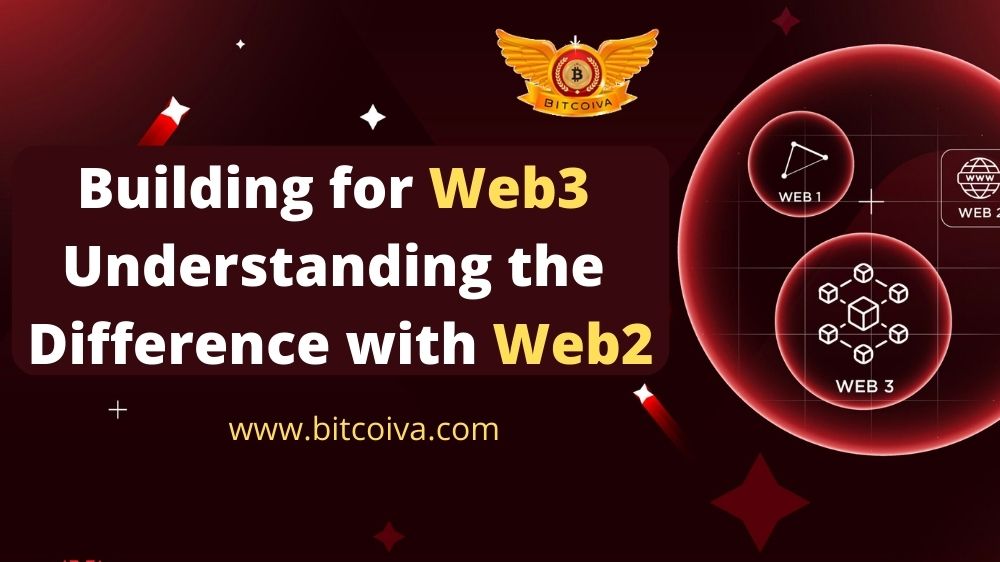Understanding the principles of Web3-focused businesses, which represent a more intuitive, just, and interconnected ecosystem that can teach us a lot about the future of the internet. An increasing number of entrepreneurs and developers are entering this emerging market as a result of the rising popularity of digital assets like cryptocurrencies. And there is a noticeable rise in venture capital investments in Cryptocurrency Platforms In India and blockchain firms.
However, blockchain-based businesses do not adhere to a predetermined or common template, unlike conventional internet-based or Web2 businesses like Meta and YouTube.
These businesses are working to develop Web3. The next iteration of the internet, will run decentralized and blockchain-based services and completely transform how people conduct business online.
Web3 startups are fostering new forms of interaction by giving users complete control over the platform. Adding to that, it gives users, the ability to determine its future direction. Which in contrast to Web2 behemoths that are frequently criticized for being anti-competitive and preying on user-generated content.
Instead of centralizing content and processing by using massive servers that are entirely under their control. Building for Web3 requires businesses and developers to create a network of interconnected computers. Which further, will facilitate closer and faster interaction among users.
Furthermore, these companies aren’t just handing over control. They also return the business’s profits to the users who invested in them.
There is a need for an entirely new technology that can provide all of Web2’s functionalities. While doing away with the need for controls, or outside parties to oversee every aspect of the business in order for all these unique aspects to be incorporated.
Unrestricted Platform
Users were able to interact with numerous social media, microblogging, video-sharing, and other platforms. When the internet switched from the Web1 to the Web2 era, seemingly revolutionized how people communicated and consumed content.
Due to the need for multi-user access, Web2 companies had to invest in both processing power and storage space. In addition to developing custom software to power their distinctive applications.
In the last ten years or so, cloud computing has aided in the expansion of small businesses. Instead of spending more money on buying dedicated servers, they began using services offered by Amazon Web Services, Microsoft Azure, and IBM Cloud.
In addition to assuming a significant amount of importance in the Web2 ecosystem, there are some results of this transition. The companies also established a hegemony that has altered the dynamics of the internet.
For Web3-focused startups, it is obvious that they need to use a technology that can handle numerous transactions. It hides user identities unless there is a need for verification. And it relies on its user base to handle platform-specific transactions.
The need to bypass current tech giants becomes even more important. Because these new-age businesses don’t depend on user data for revenue.

Adoption of Blockchain
Blockchain technology, was first described in the Bitcoin Whitepaper in 2008, has emerged as the best option for Web3 developers.
This technology supported thousands of decentralized applications that gave the world new perspectives. Perspectives on conventional business applications by using cryptographic elements to sign contracts and execute them using a network of computers called nodes. This same technology is used in Coin Exchange India.
In addition to introducing Cryptocurrency India as a new asset class, blockchain technology has assisted businesses in streamlining operations. And also in achieving efficiencies that were previously unattainable.
Leading cloud service providers are now offering blockchain-as-a-service (BaaS) to businesses. So that they can deploy distributed ledger technology without incurring costs or risks . And they are associated with setting up their own protocols.
Instead of relying on BaaS providers, businesses that are committed to innovating for Web3 can choose to set up their own scaling solutions. By building upon already-existing protocols like Top Cryptocurrency In India Ethereum, Web3 can set solutions.
In either case, business owners and software developers have a solution to the decentralization issue in addition to Crypto Platform India. And will undoubtedly need to use blockchain technology to create a peer-to-peer (P2P) network. In order to drive the development of the internet of the future, it needs to use blockchain technology.
Personalizing Content
Any Web3 application or service will undoubtedly have blockchain technology at its core. But interactive and immersive technologies like artificial intelligence, augmented reality, and virtual reality also play important roles.
Web3 users will be able to tailor their experiences based on factors that are more important or relevant to them. Thanks to AI’s ability to take clues from human behavior. Users could thus have distinctive experiences through the same platform, assisting businesses in serving a larger global audience.
Additionally, by utilizing AI-enabled gadgets that are linked to the internet, people can interact with vehicles, gaming systems, production equipment, and other previously isolated machines to enjoy. In which it allows a more to connected experience through handheld gadgets or wearables like VR goggles.
AR and VR technologies will be essential for applications that let users “touch and feel” things online in order to enhance the visual experience.
Although there are many AI, VR, and AR products on the market, Web3 entrepreneurs must integrate them into their platforms in order to provide a future-ready experience. So, that they won’t be limited by geographical, cultural, or social boundaries.
Visit us on: www.bitcoiva.com

